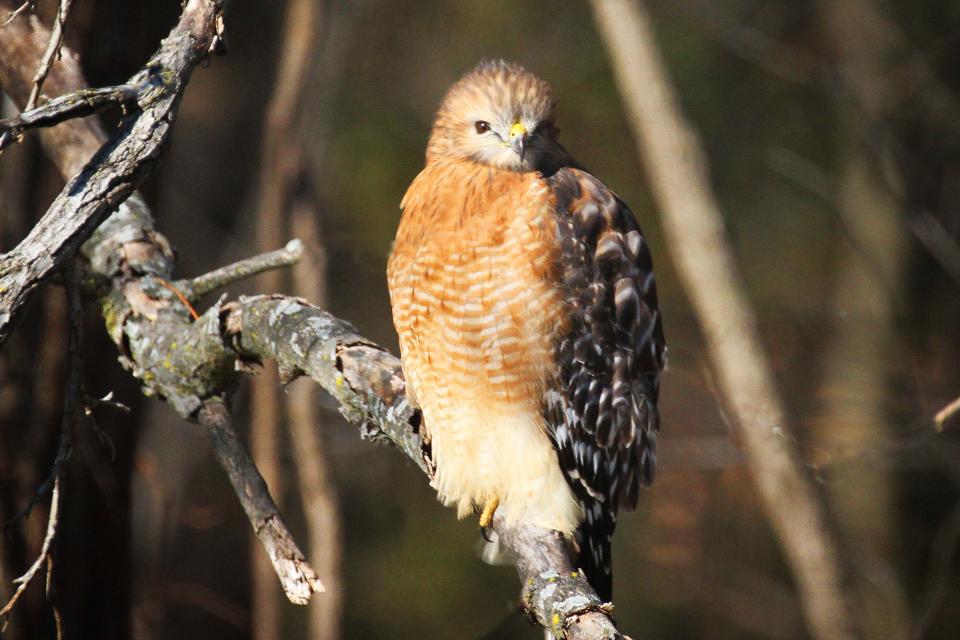Ever wonder how birds stay warm in the winter? Here are 10 strategies they use to survive.
Many bird leave for the winter, migrating south to warmer climes.
Those that stay, however, not only avoid the hazards of migration but can also likely maintain a year-round territory.
Staying means they must survive the cold. How can birds weighing no more than a couple of coins stay warm in subfreezing weather?
Here are 10 strategies they use:

Most birds shelter overnight in dense foliage or in cavities for protection against cold, wind, and wet.
To conserve body heat, most birds can tuck their heads into their shoulder feathers and/or tuck one foot at a time into belly feathers. Some simply fluff belly feathers sufficiently to cover both feet simultaneously.
Virtually all birds readily fluff up their body feathers to create dead-air pockets. Like a down coat, fluffed feathers significantly reduce body heat escape.
Some birds share warmth by huddling together, shoulder to shoulder, along branches or inside cavities. Bluebirds often use nest boxes for wintertime roost boxes, thus huddling effectively.
Some species pack on body weight in late summer and fall, adding an extra layer of fat for warmth. Chickadees and finches may carry over 10 percent body fat in winter. Of course, weight gain is limited by aerodynamic necessity. Birds must never get too fat to fly.
Just as humans grow warmer during exercise, birds grow warmer by shivering. By blocking something called myostatin, birds also increase muscle mass in winter, permitting them to shiver more effectively. As an Audubon.org site notes, "This [shivering] isn't the familiar tremble that mammals use to generate heat. Birds shiver by activating opposing muscle groups, creating muscle contractions without all the jiggling typical when humans shiver." The method enables birds to effectively retain heat.
Many birds combine overnight roosting habits with the all-day-long habit of gobbling down high-fat foods. The energy generated by fat consumption enables them to maintain body temperature. Find enough high-fat food − in the wild or at feeders − and they can survive the cold.
Large birds actually grow more feathers for better winter insulation.
Even though birds typically have an average body temperature of 105 degrees, they can also adjust temperatures in various parts of their body, thus reducing energy demands. Again, according to Audubon.org, many species have "the ability to keep warm blood circulating near vital organs while allowing extremities to cool down." Maybe you've seen gulls or ducks standing on ice, their feet surely near freezing. Still, those birds' body temperatures are perfectly regulated.
A few birds, like chickadees, undergo something called regulated hypothermia. It's something like torpor, the overnight "hibernation" that hummingbirds employ to survive, but if wintering birds went into torpor, it would require too much precious energy to return to normal at daylight. So regulated hypothermia is less extreme than torpor with body temperatures dropping no more than about 22 degrees.
If we extrapolate the message from these strategies, it's obvious how we can help overwintering birds: Provide adequate shelter by planting dense-foliaged conifer trees and shrubs, leaving dense frost-killed vegetation in place, and/or creating artificial dense foliage with brush piles.
Add a few nest/roost boxes, the vents closed for winter warmth. Offer high-fat black-oil or nyjer seeds and suet in feeders kept clean from disease.
For more information about birds and bird habitat, see Sharon Sorenson's books How Birds Behave, Birds in the Yard Month by Month, and Planting Native to Attract Birds to Your Yard. Follow daily bird activity on Facebook at SharonSorensonBirdLady, or email her at chshsoren@gmail.com.
This article originally appeared on Evansville Courier & Press: How do birds stay warm in the winter?

